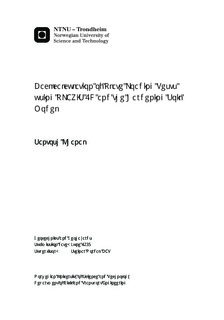Backcalculation of Plate Loading Tests using PLAXIS 2D and the Hardening Soil Model
Master thesis
Permanent lenke
http://hdl.handle.net/11250/232715Utgivelsesdato
2013Metadata
Vis full innførselSamlinger
Sammendrag
Shallow foundations are extensively used to support structures of all sizes in order to safely transmit the structural load to the ground without exceeding the bearing capacity of the ground and causing excessive settlement. They are typically embedded up to a few meters into the soil profile. While designing foundations, two requirements need to be satisfied: complete failure of the foundation must be avoided with adequate margin of safety (bearing capacity) and relative settlement should be within limits that can be tolerated by superstructure. Foundation is that part of the structure which is in direct contact with soil and involves the footing and the ground influenced by the footing. The master thesis aims to back-calculate the load tests using advanced soil models in PLAXIS 2D in order to gather experience on soil behavior and constitutive models. For this, extensive study of literature with full-scale load tests was carried out. Both tests on clay and sand were the theme interest.To examine the plate-load tests, three case studies were selected. In this report, the load-settlement responses of vertically loaded footings placed on both sands and clay were analysed using the finite element method. The numerical analysis was performed using PLAXIS 2D. The soil profiles and parameters used in the analysis were based on either in situ tests or laboratory tests. The Hardening Soil model was used as a material model to analyse the soil behavior. Finally, the load-settlement curves obtained from finite element analysis were compared with those from plate-load tests and see whether they are well fitted.The first case study was on clay till from Sweden. In this case, the back-calculated results showed that c_ref^' = 11.45 to 14.45 kPa and ɸ = 300. The second case was in saprolitic soil from Portugal. In this case, c_ref^' = 8 to 13 kPa and ɸ = 370 to 380. The third case was on sand from USA. In this case, sand shows some varying behavior in stiffness. The stiffness from laboratory tests and back-calculated vary by a factor of 3 to 8. The angle of friction was from 360 to 390.
